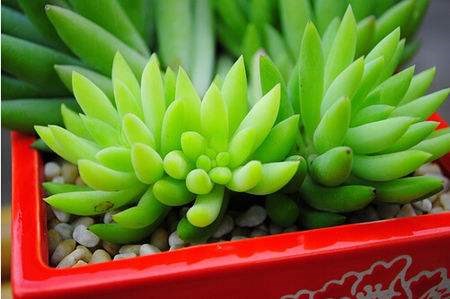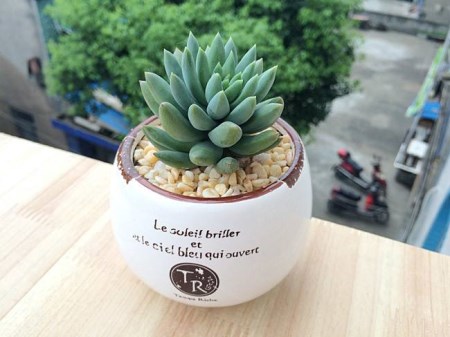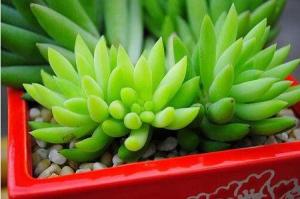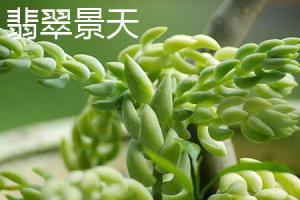1、 Introduction
The jade bead curtain belongs to the genus Sedum of the Sedum family. It is a succulent plant with thick leaves and more pulp. Like the jade bead curtain, the thousand handkerchief Buddha also belongs to the genus Sedum of the Sedum family. It is also called Wang Yuzhu curtain. So these two plants are the same from the category

2、 Morphological characteristics
The leaves of the thousand handkerchief Buddha look much larger than those of the jade bead curtain, about 2.5 times larger. If you observe carefully, the shape is also very lovely. The leaves of the thousand handkerchief Buddha look sharper. The jade bead curtain gives people the feeling that it is relatively round, and only the tip of the leaf is relatively sharp. Although the leaves are stretched around, the leaves of the thousand handkerchief Buddha are obviously more than those of the jade bead curtain. But the stem of the jade bead curtain is a little drooping. Sometimes when it is well raised, the stem can be more than one meter long and can be branched. Its leaves are generally about three centimeters, a little pink green, especially closely around the rhizome

3、 Characteristics of flowers
The thousand handkerchief Buddha and the jade bead curtain grow to a certain extent, they will bloom beautiful flowers. Generally, when the thousand hand Buddha blooms, it looks very elegant. At the beginning, the flower bud is wrapped by thick leaves, and the flower bud cannot be seen. With the full opening of the leaves, the delicate flower bud can be exposed. The flowers are generally yellow. Generally, the flowering season is in spring and summer, and the shape is very beautiful and generous. This is also the reason why many people like thousand hand Buddha. The flower bud of the jade bead curtain generally grows at the top of the stem. The shape of the umbrella house flower generally opens a lot of small flowers, many of which can be as many as a dozen. The color is dark red, one degree darker than that of ordinary roses

In fact, these two succulent plants are easy to distinguish if observed carefully, especially from their flowers. Although there are differences in morphology and flowers, the methods of breeding are also similar

 jackfruit
jackfruit snake plant
snake plant hibiscus
hibiscus hydrangea
hydrangea lavender
lavender Green roses climb al...
Green roses climb al... If you don't pay att...
If you don't pay att... Management of four g...
Management of four g...






























